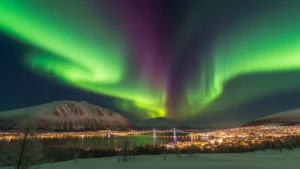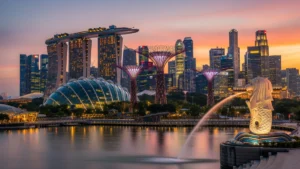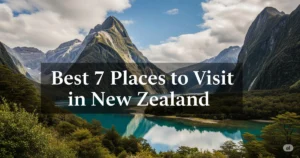Peru is probably one of the most famous places in South America, and the mysterious ruins of Machu Picchu have decorated many tourist postcards, but when the country is absolutely celebrated for the Inca Trail and the old archaeological site, Peru has much more, including museums with hot springs and Peru.
Best Places to Visit in Peru
1. Lake Titicaca
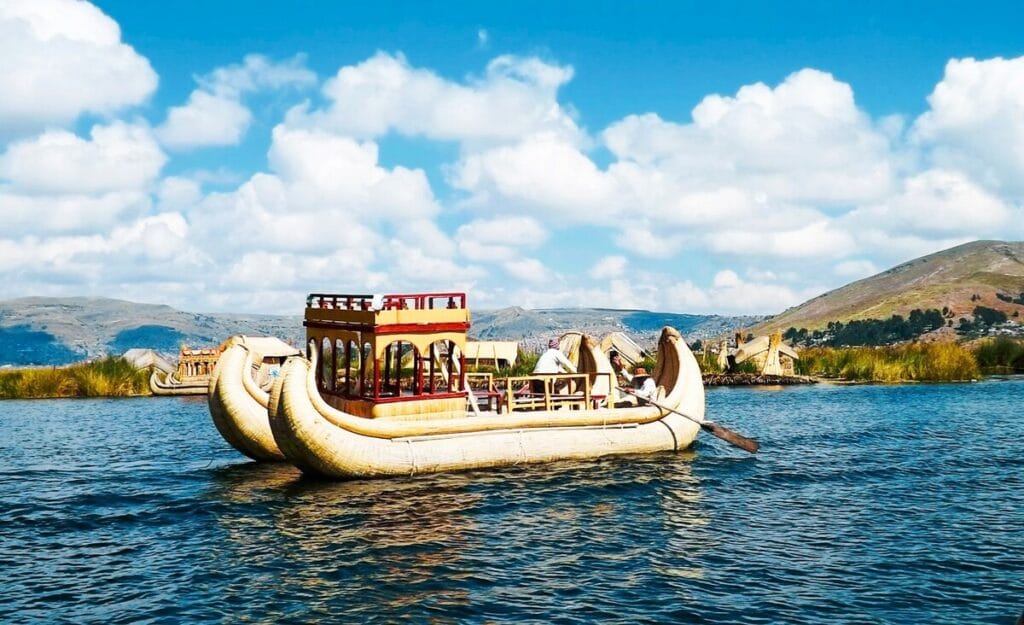
South America’s largest lake, Titicaca Lake, lies on the border of Peru and Bolivia at a height of only 3,810 m. It is considered to be the highest navigable lake in the world.
Many of the 41 islands are inhabited, including the famous floating islands created by local people using the Totora Reeds. The lake is home to around 500 species of aquatic life, including a large population of water birds.
According to the local legend, the Titicaca Lake is considered the source of the sun, making it a place with deep cultural and spiritual significance in Andean mythology.
Why go to Lake Titicaca?
Lake Titicaca offers a mix of cultural recess, spiritual surprise, and beautiful peace, with the islands to see sunrise rituals contained in ancient Inka mythology. This is not just a destination – it is a woven experience of water, myth, and living tradition.
How to Travel? By Plane, Bus, Train, Taxi
| Travel Mode | Route | Time | Cost (Approx.) | Notes |
| Plane | Lima Juliaca (then taxi/bus to Puno) | 1 hr 40 min flight + 1–1.5 hr road | $50–$130 USD | Easiest & fastest option to reach Puno |
| Bus | Lima Puno | 18–22 hours | $25–$50 USD | Scenic but long; overnight VIP buses available |
| Train | Cusco Puno (PeruRail Titicaca Train) | ~10.5 hours (luxury train) | $200–$500 USD | Luxury journey with meals, observation deck, and cultural shows |
| Taxi or Van | – | 1–1.5 hrs | $10–$20 USD | Frequent airport shuttles available |
2. Huascarán National Park
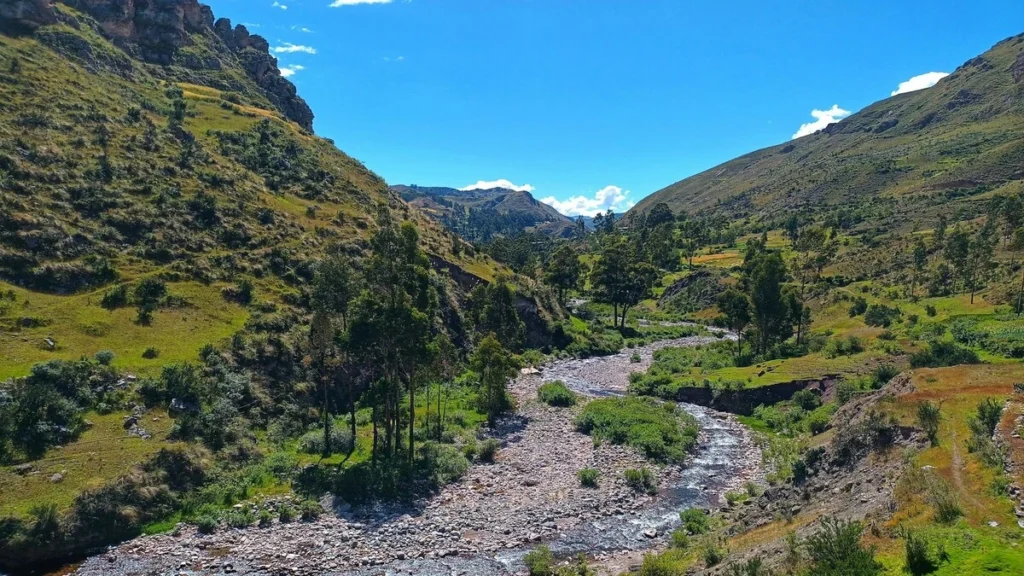
Huascarán National Park is high in the Andes mountains in the Sierra region of Peru. The world’s tallest tropical mountain range, which covers almost the entire Cordillera Blanca, is known for its dramatic scenes, huge peaks, and organic prosperity. In the heart is the highest peak of Peru, Huascarán, rises to a height of 6,768 m.
The park was established in 1975 and was appointed a UNESCO World Heritage Site in 1985, extending over 3,400 square kilometers and protecting a wide range of ecosystems. It is a home with over 800 species of high and a flora and more than 100 species of mammals, birds, amphibians, and reptiles, many of which are spatial or endangered. The renowned wildlife includes the Andean Condor, Spectacled Bear, and Puma that roam in their diverse landscape.
Visitors to Huascarán National Park can enjoy several external activities, including trekking, rock climbing, bird watching, and the Glacier Tour. Popular attractions include amazing Lalanganuko lakes, challenging Santa Cruz Trek, and ancient archaeological sites in East Insan. Park offers an unforgettable experience for more than 600 glaciers, countless alpine lakes and roaring rivers, perfect, brave and photographers.
| Travel Mode | Route | Time | Cost (Approx.) | Notes |
| Plane | Lima → Anta (then to Huaraz) | ~1 hour flight + 1 hr drive | $60–$150 | Limited availability |
| Bus | Lima → Huaraz | 7–9 hours | $13–$35 | Most popular and budget-friendly |
| Train | Not available | – | – | No train route exists to Huaraz |
| Local | Huaraz → Park Gate | 1.5–5 hrs | $5–$50 | Depends on location and transport |
3. Colca Canyon

One of the reasons is that the Colca Canyon is the third most viewed tourist destination in Peru. Known for its wonderful scenes, this valley is one of the deepest in the world – is deeper than doubled as the Grand Canyon.
If you are tired of wonderful scenes at any time, you can just look at the sky, where you can see Royal Andean condors gliding over your head, as well as ever to see with some biggest hummingbird. Villages nearby are also good places to buy local crafts and experience traditional and culture.
Located in the Arequipa region of the South Peru, the Colca Colca region is one of the deepest valleys in the world -up to a depth of more than 3,270 meters (10,725 feet), twice as deep as the Grand Canyon. It is a paradise for hikers, birds and cultural travelers, and offers close-ups with incredible panoramic views, authentic Andean villages and Andean Condor.
| Travel Mode | Route | Time | Cost (Approx.) | Notes |
| Plane | Lima Arequipa | ~1 hr 30 min flight | $40–$100 USD | Most efficient way to reach the Colca region |
| Bus | Lima Arequipa | ~15–17 hours | $25–$60 USD | Overnight buses available (e.g., Cruz del Sur, Oltursa) |
| Local Van/Bus | Arequipa Chivay or Cabanaconde (Canyon base) | ~3.5–5 hours | $5–$15 USD | Chivay = spa town; Cabanaconde = best for trekking |
| Train | Not available | – | – | No train service to Arequipa or Colca Canyon |
Why go to the Colca Canyon? Incredibly natural beauty – deep canyons, volcanic background and green roofs. Though trekking routes for all levels. See the legendary Andean Condor in the flight. Experience traditionally Andean life in remote villages.
| Route | Duration | Highlights |
| Cabanaconde to Sangalle (Oasis) | 1–2 days | Descend to the lush oasis at the canyon’s base and return uphill the next day |
| 3-Day Trek (Loop) | 3 days | Cabanaconde → Llahuar → Sangalle → back to Cabanaconde; includes hot springs |
| Llahuar Trek | 2–3 days | Stay at riverside eco-lodges, soak in natural hot springs |
| Cabanaconde to Tapay | 2–3 days | Remote route through authentic villages like Tapay and Malata |
4. Nazca Lines
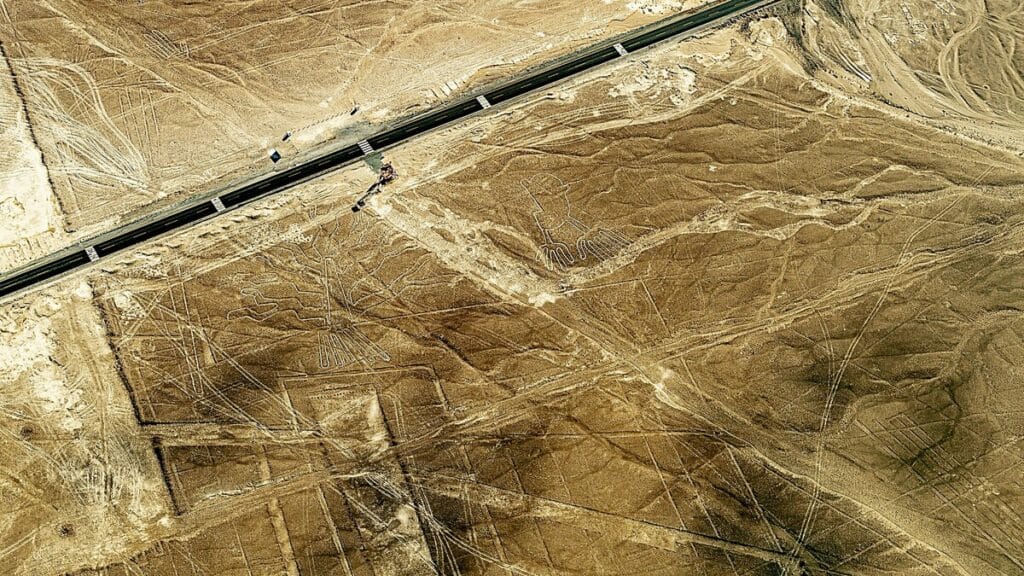
The Nazca lines that crisscross the valleys of Palpa and Nazca hold a scant area of Peru’s desert on the map. These huge geographical batting lines, animals and other geometric shapes – a thousand years ago, were carved by Nazi cafes in the sand area.
It is believed that there is religious or astronomical significance; some principles suggest that the lines were part of the way of a sacred ceremony. The drought, windless and stable climate in the Nazca desert has not preserved these ancient characters, which show and retain them to date.
Why go to the Nazca lines? Look at the lines above – really, the only way to appreciate their scale and symmetry. Learn about the desert before the enemy at Cahuachi through museums and ruins nearby. Explore one of the world’s largest archaeological arthritis.
| Travel Mode | Route | Time | Cost (Approx.) | Notes |
| Plane | Lima Pisco (then 3.5–4 hrs to Nazca by road) | 1 hr 10 min flight + 4 hrs drive | $60–$120 USD | Nearest airport: Pisco, not Nazca itself |
| Bus | Lima Nazca | ~7–9 hours | $15–$35 USD | Best option; many overnight luxury buses available |
| Train | Not available | – | – | No train service to Nazca |
| Flight Type | Duration | Cost (Approx.) | Notes |
| Small aircraft tour | 30–40 mins | $70–$100 USD | Depart from Nazca Airport or Pisco Airport for aerial views |
| Best Time to Fly | Morning | – | Clear skies, minimal turbulence |
5. Huacachina
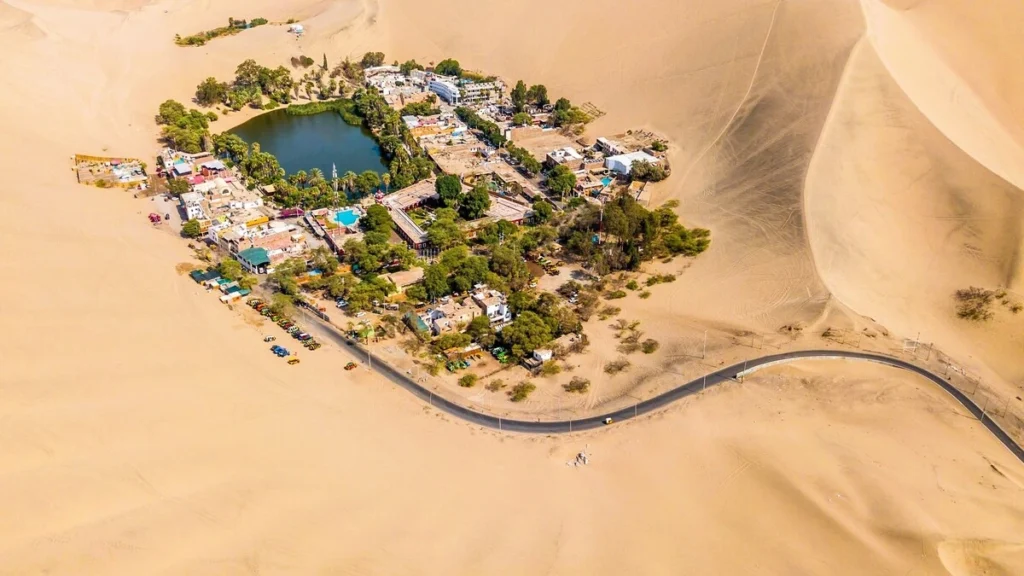
Amazon covers a large part of Peru, Huacachina is a completely different type of landscape, massive tibba. Huacachina has a small lagoon surrounded by palms in the heart, forming a picturesque desert oasis.
The huge piles around the city attract the wrong people with adrenaline, who come here to try sandboarding. Visitors can also enjoy the dune buggy tour, which offers an exciting and beautiful walking through the surrounding desert.
Why go to Huacachina?
Huacachina Paras provides a lifetime migration in the heart of the Perus desert to reduce cocktails in the oasis at sunset at sunset. Whether you are here to relax or increase your heartbeat, this little village guarantees a great adventure.
How to Reach Huacachina
| Travel Mode | Route | Time | Cost (Approx.) | Notes |
| Plane | Lima Pisco (Capitán FAP Renán Elías) → Ica by taxi/bus | ~1 hr flight + 1.5 hr drive | $60–$120 USD | No direct flight to Ica; fly to Pisco, then continue by road |
| Bus | Lima Ica → Huacachina by taxi | ~4–5 hours + 10 min | $10–$25 USD | Most popular, scenic, and budget-friendly route |
| Train | Not available | – | – | No passenger train service to Ica or Huacachina |
| Taxi / Mototaxi | 10 mins | $2–$5 USD | Available at Ica bus terminals or hotels |
6. Trujillo
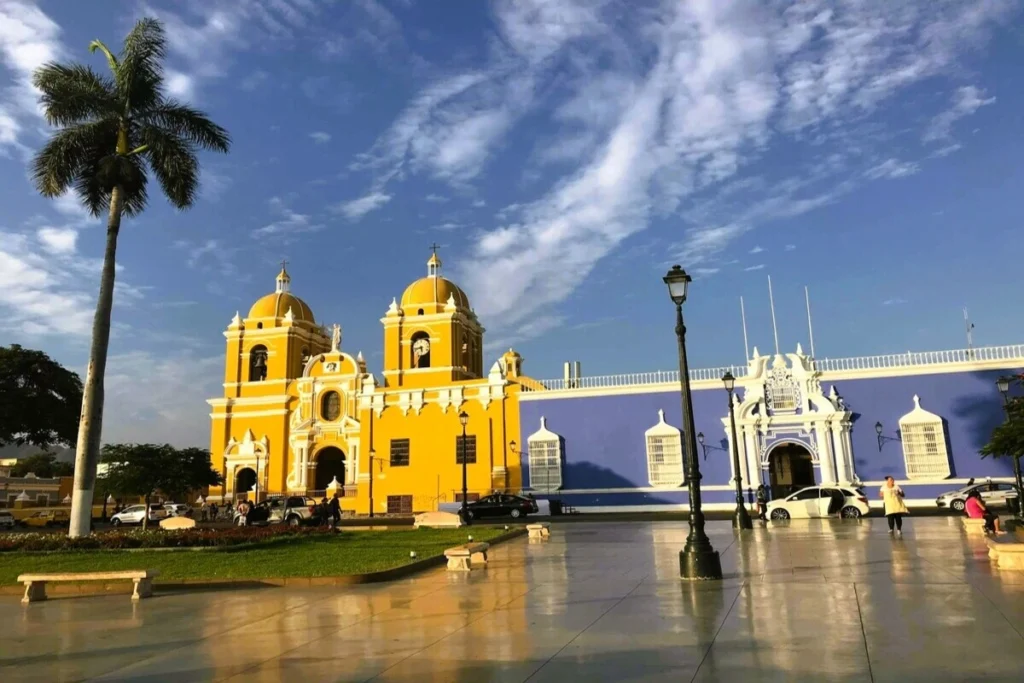
Trujillo is located in a juicy valley, about 8 hours north of Lima, and is known for its photogenic colonial center, filled with colored Spanish mansions and bizarre churche. From the Pacific coast, this relatively large city was established in the 16th century, and it is close to the abandoned ruins of Chan Chan-Sayam, the largest economic empire of ancient Peru.
Within its impressive, experienced walls, there is a large campus of ancient earth murders, urban-religious temples, buried places, and royal houses, the largest adobe in the city that reflects the architect and cultural sophistication of the Chimu civilization.
The best time to travel, Trujillo has a mild desert climate from year to year, which makes it a great destination at any time. However, the best months to travel are April to November – dry, sunlight, and ideal for the discovery of ruins and moving tourists. January to marching and moist, but still suitable for travel. Celebrating Peru’s national dance, going to capture the festival de la Marinera at the end of January or the end of February.
Why go to Trujillo? Trujillo combines colonial beauty, ancient civilizations, and modern culture into a dynamic destination. Whether you walk on historical space or stand between Chan Chan’s ruins, you go through the layers of Peru’s history and heritage.
| Travel Mode | Route | Time | Cost (Approx.) | Notes |
| Plane | Lima Trujillo (Cap. FAP Carlos Martínez de Pinillos Airport) | ~1 hour flight | $40–$120 USD | Quickest and most convenient option |
| Bus | Lima Trujillo → Taxi to city center | ~8–10 hours | $15–$35 USD | Scenic route; VIP buses available for comfort |
| Train | Not available | – | – | No passenger rail line to Trujillo |
7. Lima
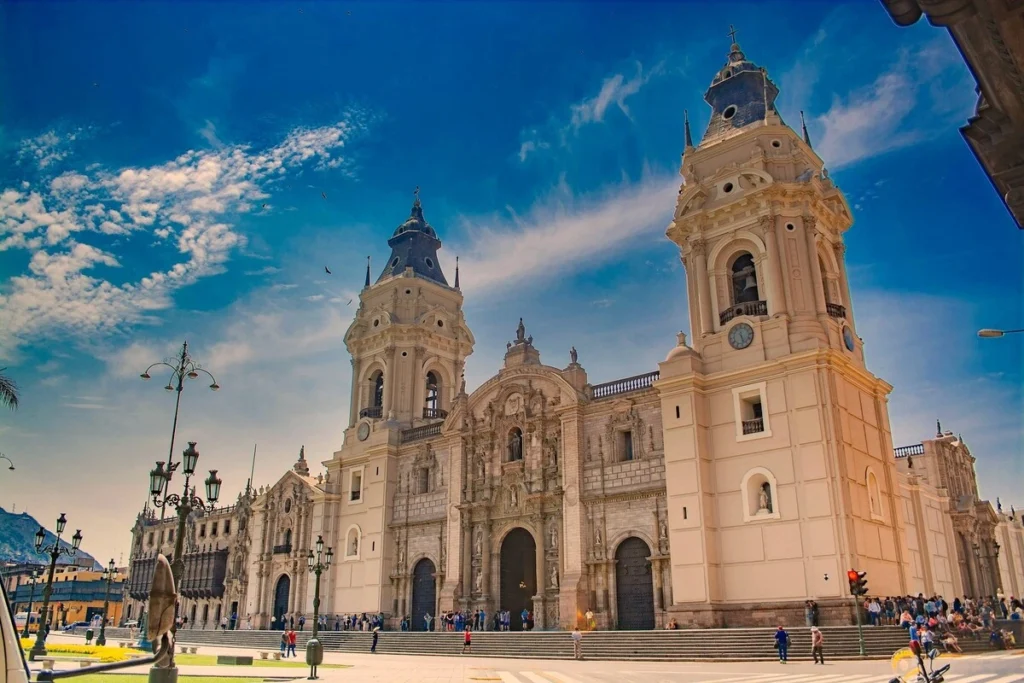
As a capital and largest city in Peru, Lima is a large metropolis of around 9 million people. The city was created by Spanish winner Francisco Pizarro in 1535, offering a rich history, world classes and an attractive mix of living culture.
Whether you go through your colonial architecture and crafts markets, Lima Centro’s historical heart, or a tourist friendly, looking for the green suburb of Miraflores-are known to your old shops, trendy bar and coastal ideas-you are actually for something special.
Why the Lima Tour?
From ancient pyramids to coastal rocks, award -winning food and colonial, Lima is a destination where there is history and modernity coexistence in each corner. Whether you a meal, a cultural lover or a brave, Lima will surprise and satisfy you.
| Travel Mode | Route | Time | Cost (Approx.) | Notes |
| Plane | Domestic & international to Lima (LIM) | From 1 hr (domestic) to 8–15 hrs (intl) | $60–$120 USD (domestic) | Main airport: Jorge Chávez Intl. Airport, located in Callao (30–40 mins from Miraflores) |
| Bus | Major cities Lima | 3–22 hours (depending on origin) | $10–$50 USD | Excellent long-distance bus network; comfortable VIP options available |
| Train | Not available to/from Lima | – | – | No passenger rail service to Lima |
FAQ:
- Why is Peru so famous?
Why is Peru Famous? Uncover the reasons behind Peru’s fame, from its rich cultural heritage and the Inca Empire to the world-renowned Machu Picchu, delectable Peruvian cuisine, and awe-inspiring natural beauty. - Is Lima or Cusco better?
If you’re more interested in gastronomy, shopping, and nightlife, you may prefer to visit Lima, which has some of the country’s top rated restaurants. This is also where you find the best shopping experience. But note that Cusco still offers delicious restaurants and bars. - What is Peru unique for?
Because it has so many different ecosystems, Peru is home to a wider variety of plants and animals than most other countries on Earth. For many reasons, Peruvians have not had as much of an impact on their natural world as many other countries, and much of these ecosystems have been undisturbed.
Conclusions:
From the sacred water in Lake Titikaka to the rising peaks of Huskarain National Park, and from the mysterious Nazka lines, the Peruvian landscape, from the lines in Lima, provides a fantastic selection of culture and history. Whether you explore the depth of the Colca Canyon, Sandboard in Huacachina, or search for the colonial attractions in Trujillo, each destination tells its unforgettable story.
No matter what kind of traveler you are – adventurer, history buff, food or nature lover – promise an experience like someone else. Start your journey today and highlight the miracles that make this South American gem really unique.




